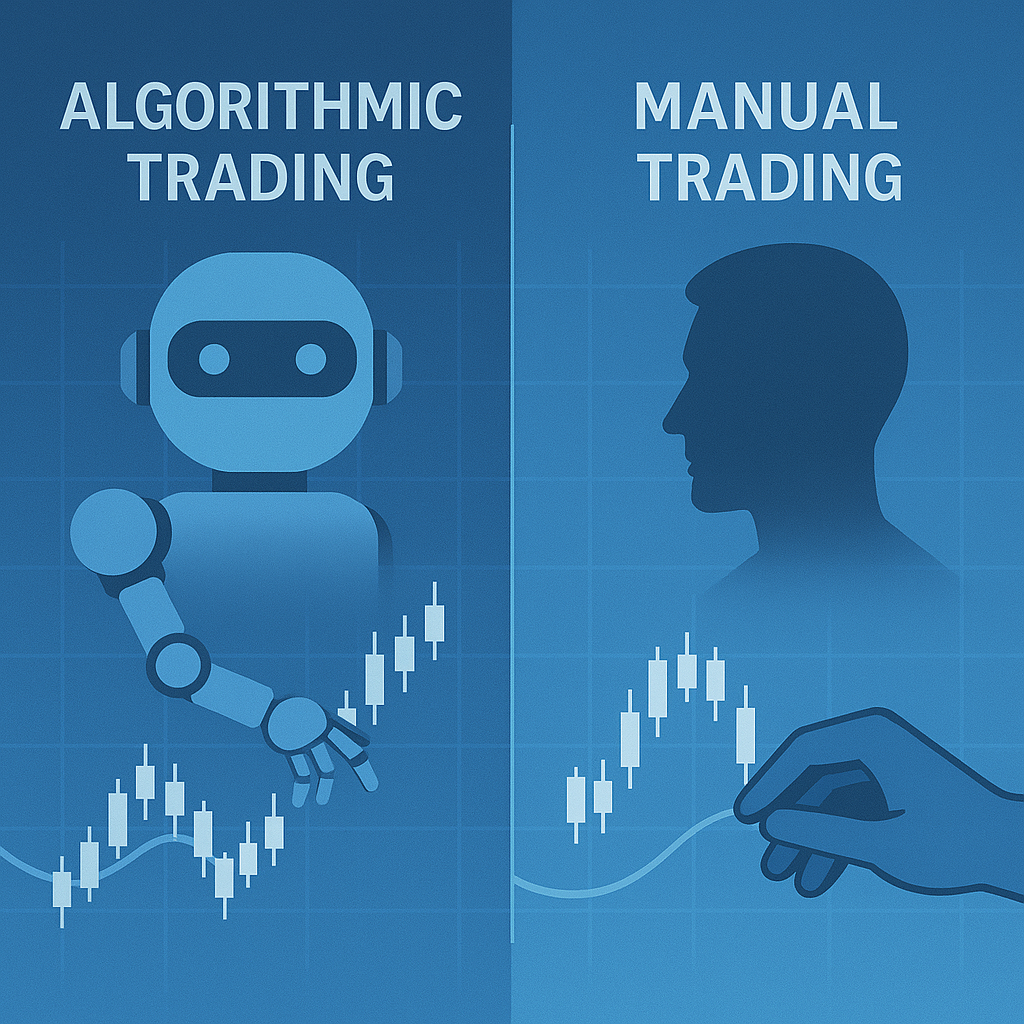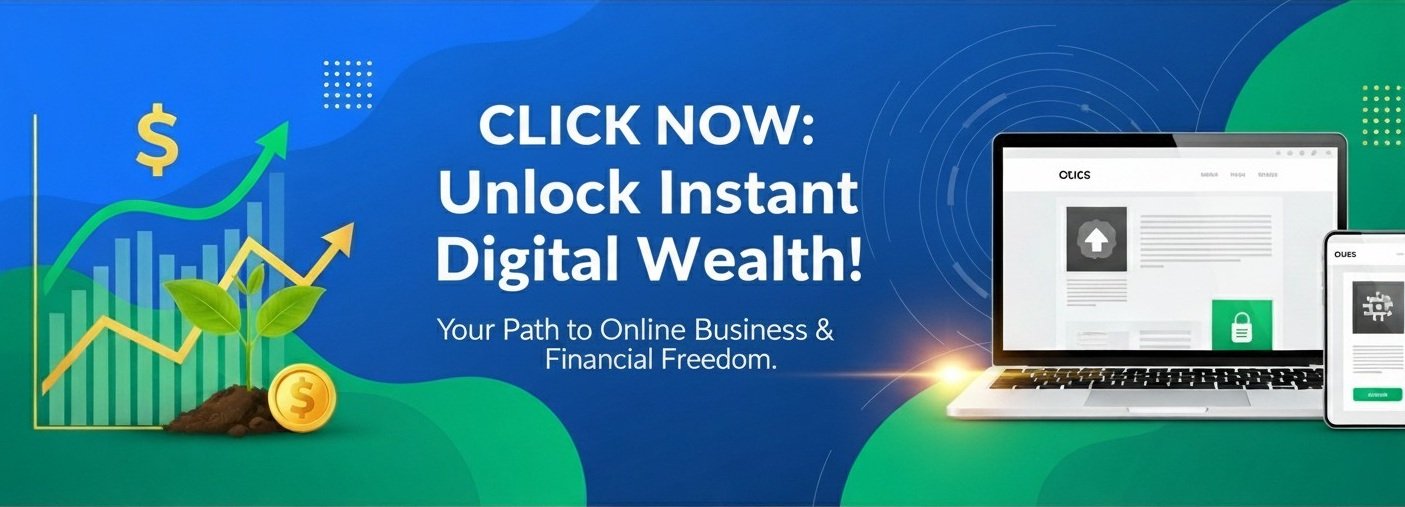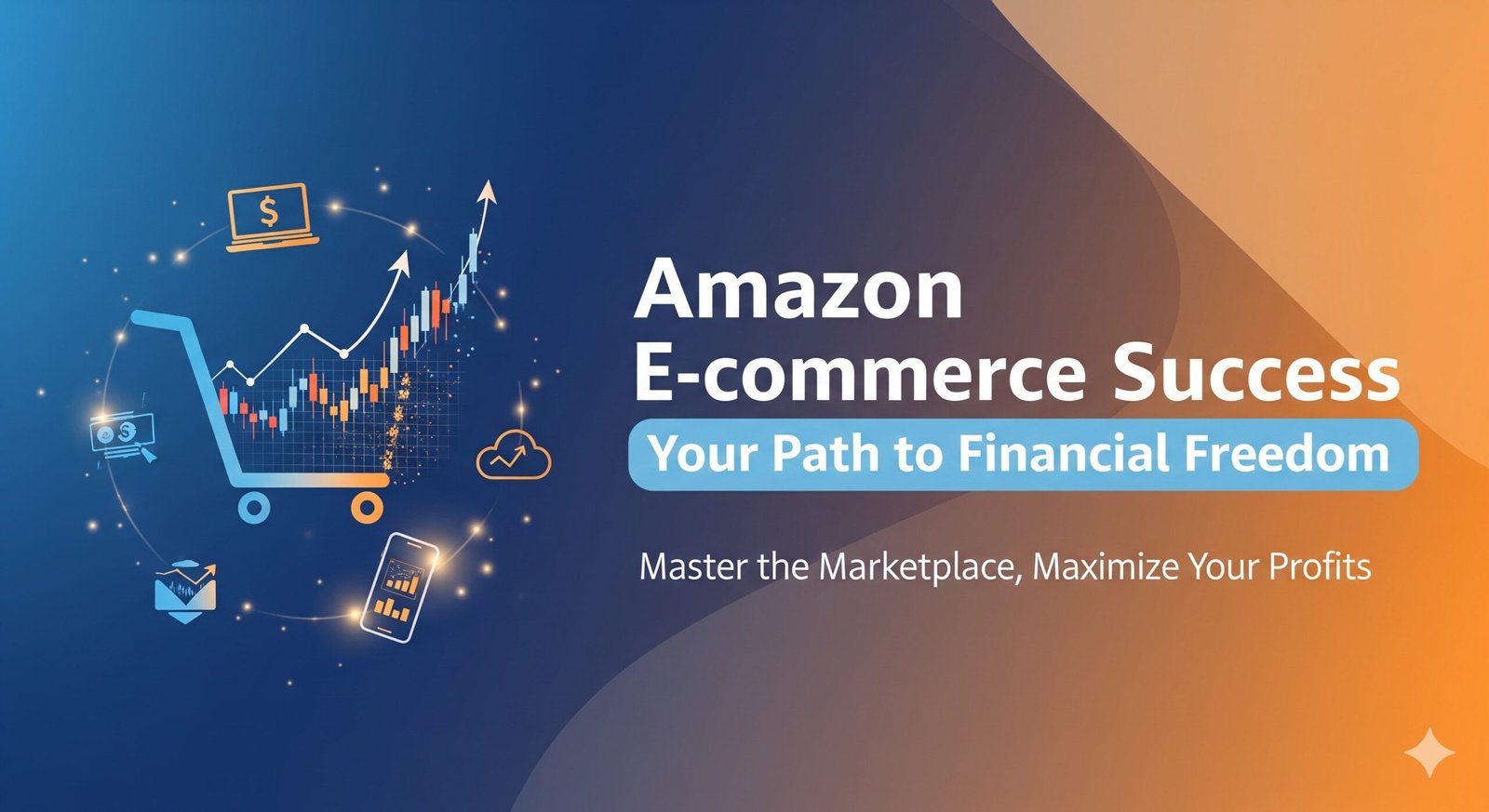Table of Contents
- What Is Algorithmic Trading?
- What Is Manual Trading?
- Key Differences Between Algorithmic and Manual Trading
- Pros of Algorithmic Trading
- Cons of Algorithmic Trading
- Pros of Manual Trading
- Cons of Manual Trading
- Real-World Cases of Algorithmic Trading
- Real-World Cases of Manual Trading
- Algorithmic Trading vs Manual Trading: Which Is Better?
- Tools and Platforms for Algorithmic and Manual Trading
- The Role of Technology in Trading
- The Future of Algorithmic and Manual Trading
- Frequently Asked Questions (FAQs)
- Conclusion
- Disclaimer
1. What Is Algorithmic Trading?
Definition of Algorithmic Trading
Algorithmic trading, often called algo trading or automated trading, involves using computer programs to execute trades based on predefined rules or algorithms. These algorithms analyze market data, identify opportunities, and place buy or sell orders without human intervention. The goal is to achieve speed, efficiency, and precision in trading.
How Algorithmic Trading Works
Algo trading systems process vast amounts of data—price movements, volume, and technical indicators—in milliseconds. They execute trades according to programmed strategies, such as trend-following, arbitrage, or high-frequency trading (HFT). In 2025, algorithmic trading strategies are widely used across asset classes, from equities to cryptocurrencies.
Who Uses Algorithmic Trading?
Hedge funds, investment banks, and proprietary trading firms dominate algo trading, but retail traders are increasingly adopting it through accessible platforms like MetaTrader and Alpaca.
2. What Is Manual Trading?
Definition of Manual Trading
Manual trading involves human traders analyzing markets, making decisions, and placing trades without automation. Traders rely on technical analysis, fundamental analysis, or intuition to identify opportunities and execute orders.
How Manual Trading Works
Manual traders monitor charts, news, and economic data to inform their decisions. They use trading platforms to place orders, often reacting to market conditions in real time. Manual trading strategies include day trading, swing trading, and position trading.
Who Uses Manual Trading?
Manual trading is popular among retail traders, day traders, and those who prefer hands-on control. Some institutional traders also use manual methods for complex strategies requiring human judgment.
3. Key Differences Between Algorithmic and Manual Trading
Understanding the differences between algorithmic and manual trading is crucial for choosing the right approach. Here’s a comparison:
| Aspect | Algorithmic Trading | Manual Trading |
|---|---|---|
| Execution | Automated via algorithms | Human-driven decisions |
| Speed | Milliseconds, ideal for high-frequency trading | Slower, limited by human reaction time |
| Emotion | Eliminates emotional bias | Prone to fear, greed, or hesitation |
| Scalability | Handles multiple markets simultaneously | Limited by trader’s capacity |
| Consistency | Follows rules consistently | Varies based on trader’s discipline |
| Skill Requirement | Programming and data analysis | Market knowledge and intuition |
| Cost | High setup costs, lower transaction costs | Lower setup costs, higher time investment |
These differences highlight the trade-offs between automation and human control, shaping their suitability for different trading goals.
4. Pros of Algorithmic Trading
Algorithmic trading offers several advantages, making it a powerful tool in 2025. Here are the key benefits of algorithmic trading:
Speed and Efficiency
Algorithms execute trades in milliseconds, capitalizing on fleeting market opportunities that humans cannot match. This is critical in volatile markets like forex or crypto.
Elimination of Emotional Bias
By automating decisions, algo trading removes emotions like fear or greed, ensuring trades align with predefined rules.
Scalability
Algorithms can monitor and trade across multiple markets and assets simultaneously, far beyond human capabilities.
Consistency
Algo trading follows strategies consistently, reducing errors from fatigue or indecision.
Backtesting Capabilities
Traders can test algorithms on historical data to evaluate performance before live trading, enhancing strategy reliability.
Cost Efficiency
Algo trading minimizes transaction costs by optimizing execution and reducing market impact, especially for large orders.
These benefits make algo trading appealing for those seeking automated trading advantages in 2025.
5. Cons of Algorithmic Trading
Despite its strengths, algorithmic trading has drawbacks. Here are the main disadvantages of algorithmic trading:
Technical Risks
Software bugs, connectivity issues, or hardware failures can disrupt trading, potentially leading to significant losses.
Over-Optimization
Algorithms may perform well in backtesting but fail in live markets due to overfitting to historical data.
High Initial Costs
Developing algorithms, accessing data feeds, and maintaining infrastructure require substantial investment, especially for retail traders.
Lack of Human Judgment
Algorithms cannot adapt to unexpected events (e.g., geopolitical crises) that require intuition or context beyond data.
Regulatory Compliance
Algo trading is subject to strict regulations, and non-compliance can result in fines or restrictions.
Market Impact
High-frequency trading algorithms can contribute to market volatility, such as flash crashes, affecting overall stability.
Traders must address these challenges to leverage algo trading effectively.
6. Pros of Manual Trading
Manual trading remains relevant due to its unique strengths. Here are the key benefits of manual trading:
Flexibility
Manual traders can adapt strategies to unexpected market conditions, such as news events or economic shifts, where algorithms may struggle.
Human Intuition
Experienced traders use intuition and market knowledge to identify opportunities that data-driven algorithms might miss.
Low Setup Costs
Manual trading requires minimal technology beyond a trading platform, making it accessible for beginners.
Control
Traders retain full control over every decision, allowing for personalized strategies and risk management.
Learning Opportunity
Manual trading helps beginners develop market understanding and trading skills through hands-on experience.
These advantages make manual trading ideal for those who value human-driven trading strategies.
7. Cons of Manual Trading
Manual trading has limitations that can hinder performance. Here are the main disadvantages of manual trading:
Slow Execution
Human reaction times cannot compete with algorithms, missing opportunities in fast-moving markets.
Emotional Bias
Fear, greed, or overconfidence can lead to impulsive decisions, deviating from trading plans.
Limited Scalability
Manual traders are constrained by time and attention, unable to monitor multiple markets simultaneously.
Inconsistency
Fatigue, distractions, or lack of discipline can result in inconsistent trading performance.
Time-Intensive
Manual trading requires constant market monitoring, which can be exhausting and impractical for part-time traders.
These drawbacks highlight why some traders turn to automation to overcome human limitations.
8. Real-World Cases of Algorithmic Trading
Real-world examples illustrate the impact of algorithmic trading real cases in financial markets. Here are three notable cases:
Case 1: Renaissance Technologies’ Medallion Fund
Overview
Renaissance Technologies, a hedge fund, uses sophisticated algorithms to drive its Medallion Fund, one of the most successful funds in history.
How It Works
The fund employs quantitative models to identify patterns in market data, executing thousands of trades daily across global markets.
Outcome
The Medallion Fund has reportedly achieved annualized returns of over 30% since the 1980s, showcasing the power of algo trading when backed by advanced technology and data science.
Key Takeaway
Well-designed algorithms can outperform markets, but they require significant expertise and resources.
Case 2: 2010 Flash Crash
Overview
On May 6, 2010, the U.S. stock market experienced a sudden 9% drop within minutes, largely attributed to high-frequency trading algorithms.
How It Happened
A large sell order triggered a cascade of automated trades, amplifying volatility as algorithms reacted to each other’s actions.
Outcome
The market recovered quickly, but the event led to stricter regulations on algo trading to prevent similar incidents.
Key Takeaway
Algo trading can destabilize markets if not properly managed, highlighting the need for robust risk controls.
Case 3: Retail Algo Trading with MetaTrader
Overview
Retail traders use platforms like MetaTrader 5 to deploy simple algorithms, such as Expert Advisors (EAs), for forex trading.
How It Works
Traders program EAs to execute trades based on technical indicators like moving averages or RSI, automating repetitive tasks.
Outcome
Retail traders have gained access to algo trading, leveling the playing field with institutions, though success depends on strategy quality.
Key Takeaway
Algo trading is now accessible to retail traders, but it requires education and testing to avoid losses.
9. Real-World Cases of Manual Trading
Manual trading also has notable success stories and lessons. Here are three manual trading real cases:
Case 1: Warren Buffett’s Value Investing
Overview
Warren Buffett, one of the world’s most famous investors, relies on manual analysis to make long-term investment decisions.
How It Works
Buffett studies company fundamentals, such as earnings and competitive advantages, to identify undervalued stocks, placing trades manually.
Outcome
Buffett’s firm, Berkshire Hathaway, has delivered consistent returns over decades, proving the efficacy of disciplined manual trading.
Key Takeaway
Human judgment and patience can yield exceptional results in long-term manual trading.
Case 2: George Soros’ 1992 Pound Short
Overview
In 1992, George Soros manually executed a massive short position against the British pound, earning over $1 billion in profits.
How It Happened
Soros analyzed macroeconomic data and central bank policies, anticipating the pound’s devaluation, and placed trades through his fund.
Outcome
The trade, known as “Black Wednesday,” demonstrated the power of human insight in high-stakes trading.
Key Takeaway
Manual trading excels when traders leverage deep market understanding and bold decision-making.
Case 3: Retail Day Trading in Crypto
Overview
Retail day traders manually trade cryptocurrencies on exchanges like Binance, reacting to news and technical patterns.
How It Works
Traders monitor charts, social media, and news to identify short-term price movements, placing trades based on intuition and analysis.
Outcome
Some traders achieve significant gains, but many face losses due to volatility and emotional decisions.
Key Takeaway
Manual trading offers flexibility in dynamic markets but requires discipline to avoid pitfalls.
10. Algorithmic Trading vs Manual Trading: Which Is Better?
The question of which is better, algorithmic or manual trading, depends on individual goals, resources, and preferences. Here’s a balanced assessment:
When to Choose Algorithmic Trading
- You need speed and efficiency in fast-moving markets (e.g., forex, crypto).
- You want to eliminate emotional bias and maintain consistency.
- You have the technical skills or budget to develop and maintain algorithms.
- You aim to scale trading across multiple markets or assets.
When to Choose Manual Trading
- You value flexibility and want to adapt to unpredictable market events.
- You rely on intuition or fundamental analysis for long-term strategies.
- You have limited resources for algo development.
- You’re a beginner learning the markets through hands-on experience.
Hybrid Approach
Many traders combine both methods, using algorithms for repetitive tasks (e.g., scalping) and manual trading for strategic decisions (e.g., position sizing). This hybrid approach leverages the strengths of both systems.
Ultimately, the best choice aligns with your trading style, risk tolerance, and market focus.
11. Tools and Platforms for Algorithmic and Manual Trading
Both trading methods rely on tools and platforms to execute strategies. Here’s an overview of popular options in 2025:
Algorithmic Trading Tools
- Programming Languages: Python (for data analysis), C++ (for HFT), R (for statistical modeling).
- Platforms: MetaTrader 5 (retail-friendly), QuantConnect (cloud-based algo development), Interactive Brokers (API for custom algorithms).
- Data Providers: Bloomberg Terminal, Quandl, Alpha Vantage.
- Backtesting Tools: Backtrader, TradeStation.
Manual Trading Tools
- Platforms: TradingView (charting and analysis), Thinkorswim (advanced tools), eToro (social trading).
- Charting Tools: Candlestick charts, technical indicators (RSI, MACD).
- News Sources: Bloomberg, Reuters, social media (e.g., X posts for crypto sentiment).
Choosing the Right Tools
Algorithmic traders need robust programming and data infrastructure, while manual traders prioritize intuitive platforms and real-time information. Beginners can start with user-friendly platforms like MetaTrader or TradingView.
12. The Role of Technology in Trading
Technology shapes both algorithmic and manual trading, driving efficiency and accessibility in 2025.
Technology in Algorithmic Trading
- Artificial Intelligence (AI): AI algorithms adapt to market changes, enhancing strategy performance.
- Cloud Computing: Platforms like AWS enable scalable algo development.
- High-Speed Connectivity: Low-latency networks support HFT.
Technology in Manual Trading
- Mobile Apps: Trading apps allow manual traders to monitor markets on the go.
- Advanced Charting: Platforms like TradingView offer real-time technical analysis.
- Social Media: X posts provide instant market sentiment for manual traders.
Convergence of Approaches
Technology blurs the line between algorithmic and manual trading, with platforms offering automated tools for manual traders (e.g., TradingView’s Pine Script) and user-friendly interfaces for algo traders.
13. The Future of Algorithmic and Manual Trading
The trading landscape is evolving, with trends shaping both approaches in 2025 and beyond:
Algorithmic Trading Trends
- AI and Machine Learning: Algorithms will become more adaptive, learning from real-time data.
- Retail Adoption: Platforms like Alpaca democratize algo trading for retail traders.
- DeFi and Crypto: Algo trading will dominate decentralized finance (DeFi) markets.
Manual Trading Trends
- Social Trading: Platforms like eToro enable manual traders to follow successful peers.
- Education: Online courses and communities (e.g., Reddit’s r/DayTrading) empower retail traders.
- Hybrid Models: Manual traders will increasingly use automated tools for analysis.
Regulatory Outlook
Regulators are tightening rules on algo trading to prevent market manipulation, while manual trading faces fewer restrictions. Both approaches will adapt to comply with evolving standards.
14. Frequently Asked Questions (FAQs)
Q1: What is the main difference between algorithmic and manual trading?
Algorithmic trading uses automated algorithms to execute trades, while manual trading relies on human decisions.
Q2: Is algorithmic trading better than manual trading?
It depends on your goals. Algo trading offers speed and consistency, while manual trading provides flexibility and intuition.
Q3: Can beginners use algorithmic trading?
Yes, beginners can use platforms like MetaTrader, but they need to learn programming and strategy testing.
Q4: What are the risks of algorithmic trading?
Risks include technical failures, over-optimization, and regulatory compliance issues.
Q5: Is manual trading still relevant in 2025?
Yes, manual trading remains relevant for traders who value control and adaptability, especially in long-term strategies.
Q6: Can I combine algorithmic and manual trading?
Yes, a hybrid approach uses algorithms for automation and manual trading for strategic decisions.
15. Conclusion
The debate over algorithmic trading vs manual trading reflects the diverse needs of traders in 2025. Algorithmic trading excels in speed, scalability, and consistency, making it ideal for high-frequency or data-driven strategies. Manual trading, however, offers flexibility, intuition, and accessibility, appealing to those who prioritize human judgment. Real-world cases, from Renaissance Technologies’ algorithmic success to Warren Buffett’s manual investing, demonstrate that both approaches can yield impressive results when executed well.
This pros and cons of algorithmic trading 2025 guide has explored the strengths, weaknesses, and practical applications of both methods. Whether you choose automation, human-driven trading, or a hybrid approach, understanding their differences is key to aligning with your trading goals. As technology and markets evolve, staying informed and adaptable will ensure success in the dynamic world of trading.
16. Disclaimer
This article is for informational purposes only and does not constitute financial advice. Please consult a qualified financial advisor before making any investment decisions.








